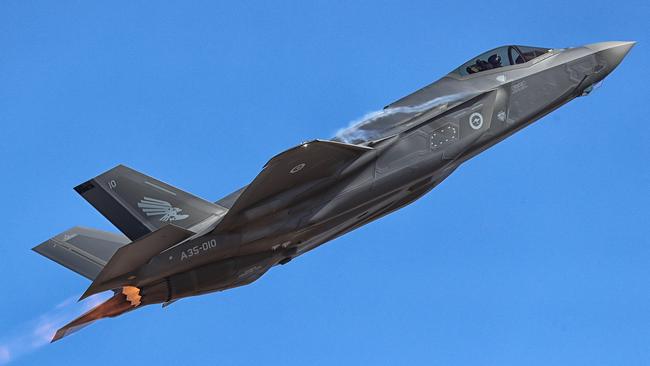Defence off target in $1.5bn fighter shortfall
Taxpayers have paid for $1.5bn worth of capabilities on the nation’s Joint Strike Fighters that won’t be delivered.

Taxpayers have paid for $1.5bn worth of capabilities on the nation’s Joint Strike Fighters — including ship-killer missiles and advanced jet-to-jet communications — that won’t be delivered under the approved $16.5bn funding for the aircraft.
Defence officials told a parliamentary committee that the fifth-generation F-35 stealth fighters won’t get advanced Maritime Strike capabilities or a new Beyond Line of Sight (BLOS) communications system under the program’s original timetable or budget.
Defence has received government approval to defer the capabilities, but the budget to purchase Australia’s 72 JSF’s remains unchanged in what analysts say is an effective $1.5bn cost increase.
The federal government confirmed in Defence’s new plan that Australia would acquire new long-range anti-ship missiles from the US for $800m.
But the stealthy cruise missiles, which have a range of more than 500km, are yet to be integrated into the JSFs, which needs to carry missiles internally to maintain its stealth characteristics. They will initially be available for use on the nation’s F/A-18F Super Hornets.
Defence said the planned BLOS capability — allowing the F-35 to communicate with other ADF aircraft and assets at long ranges — would be available in a future software upgrade.
Labor assistant defence spokesman Pat Conroy, who grilled Defence officials on the issue in a recent committee hearing, said the jets were being delivered at full cost with “important, promised capabilities missing”.
“It’s not good enough for the government and Defence to say don’t worry about paying $16.5bn for an aircraft worth $15bn, we’ll get those capabilities through later projects,” he told The Australian.
“This is breathtaking arrogance and ignores the fact this means the RAAF will not get the capabilities they were promised and it means taxpayers have to pay for two more very expensive projects.”
Air Vice-Marshal Catherine Roberts told the joint public accounts and audit committee the decisions were about “trading off those key things that we need in the capability today versus those that can be conducted in future phases”. Defence added in a statement to The Australian that changes to the program were “reviewed against the evolving threat environment, technological maturity and cost”.
“Decisions regarding the F-35 program have been considered on the basis of capability, interoperability and overall cost across the Defence portfolio and will deliver, over time, a better capability mix for Australia. They should not be considered in isolation,” it said.
“Defence remains confident that the F-35A Lightning II best meets Australia’s 5th generation multi-role fighter needs.”
The deferral of planned F-35 capabilities without a corresponding budget adjustment was first revealed in a footnote in a 2019 Auditor-General’s report, which said the move was “due to cost pressures”.
Australian Strategic Policy Institute budget expert Marcus Hellyer said at the time the decision was “effectively a $1.5bn real cost increase”.
“This means that 9 per cent of the project scope has been moved off into some undefined point in the future, but Defence is hanging onto 100 per cent of the budget to acquire the remaining 91 per cent,” Dr Hellyer said.
US defence giant Lockheed Martin recently flagged a slowdown of work on the F-35 program, saying the coronavirus crisis had delayed delivery of parts for its US assembly lines. Defence said it expected delivery of some aircraft to be delayed.




To join the conversation, please log in. Don't have an account? Register
Join the conversation, you are commenting as Logout